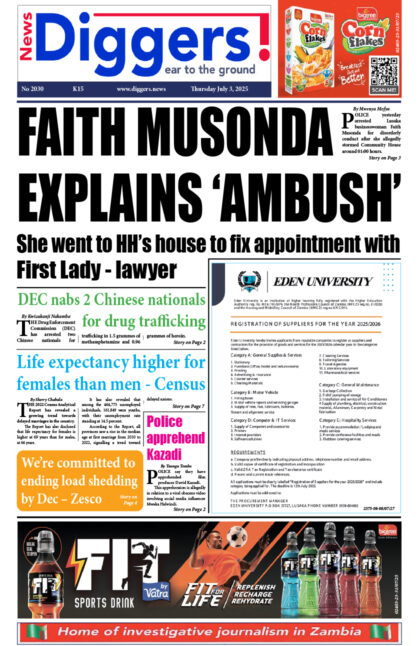BANK of Zambia (BoZ) governor Dr Denny Kalyalya says the K10 billion Medium-Term Loan Refinancing Facility has a strict eligibility criterion because it is targeted at those who can pay back the money.
Meanwhile, Zambia’s international gross reserves have continued falling to record lows of US $1.39 billion, representing just two months of import cover, largely triggered by heightened debt servicing.
Speaking during a live programme on Radio Phoenix in Lusaka, Thursday, Dr Kalyalya said the loan facility had to have stringent criteria for the funds to be put to their intended use in response to a question on why the central bank was not relaxing conditions to enable more access.
“We are on different levels; you have the big, small players. K10 billion is not a lot of money given the needs, right? So, how do you rationalize how you are going to give that? You have seen, in places where you go and give free food, what happens? Stampede! And then, in the end, the intended people don’t even get anything. So, criteria of access is inevitable when you have any limited amount of resources. We have tried as much as possible to accommodate different settings; we have said that if you have loan portfolio, for example, which is performing, you can pledge that as collateral so that we are also looking to the recovery of that from there. We also have movable collateral, but remember that, at the end of the day, someone has to assess you to say that, ‘yes, you are good for the money.’ If that ‘yes’ doesn’t come, then we have a challenge,” Dr Kalyalya replied.
“I think there’s a tendency, among us to say, whenever you are confronted, if I give you bread, you will start saying, ‘where is the tea?’ Instead of just saying, ‘thank you for the bread’ and look for the tea yourself! This is part of our problem; you start looking for what is not there, but what do we have? Why can’t we start from there? Let’s look at the cup half-full, rather than half-empty.”
He said that other financial institutions, which the State had a stake in, such as Natsave, were equally encouraged to apply for the funds, but insisted that all financial players ought to be compliant with the eligibility criteria.
“They can come, but then, they have to meet a certain criteria; this money is not free! They have to show they can put it to good use, then by putting some collateral upfront because we don’t want that money to go to waste so, we have to balance these things. So, they are very free, they are aware of it. So, they come, the conditions are satisfied, we’d be more than happy to give them the money that they need. But, they have to earn it, so to speak, because if we just give them because they are State institutions and then the systems there are not good, this money will not be applied to the need, purpose for which it is said,” he said.
Dr Kalyalya urged banks and non-banking financial institutions to ramp up applications of the K10 billion Medium-Term Loan Refinancing Facility because the uptake was slow.
“First, the uptake is not as fast. Part of it is to do that this is not free money. You have to look carefully how you are going to repay it, you look at your business model. We have had some response; we have six banks, which have come forward and seven non-bank financial institutions. In total, we have approved about K1.2 billion so far, but we have not disbursed any yet. The reason being that, after approval, we want to be satisfied that the funds, the benefits will accrue to the borrowers of that. So, the banks and non-bank financial institutions have to demonstrate that this will happen, otherwise, it will not help matters if the benefits do not flow to the ultimate borrowers of these funds,” Dr Kalyalya said.
And Dr Kalyalya said debt servicing had continued to divert huge chunks of cash away from the local economy, further exacerbating the country’s liquidity crisis.
“The debt servicing that we have been doing has been siphoning liquidity out of the market such that there’s no circulation of that money in the economy so the system has been starved of liquidity. Now, come COVID-19, it just worsens the situation. So, we looked at what can we do to help the situation; we invoked our role as supervisors of these institutions to try and deal with that liquidity constraint,” explained Dr Kalyalya.
Meanwhile, Zambia’s international gross reserves continued falling to record lows of US $1.39 billion by the end of the first quarter of this year, representing just two months of import cover, largely triggered by heightened debt servicing.
“Gross international reserves, at US $1,393.4 million (equivalent to 2.0 months of import cover) at end-March, 2020, were US $56.3 million lower than the US $1,449.7 million at end-December, 2019. This mainly reflected government debt service payments. The decline in reserves was moderated by net foreign exchange purchases amounting to US $144.2 million, of which US $49.7 million was mineral royalty,” stated BoZ.



















